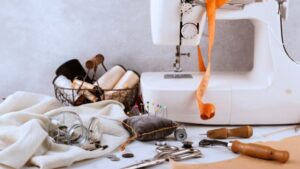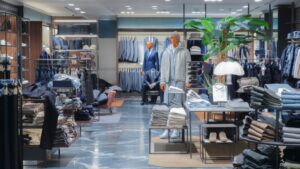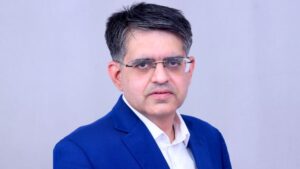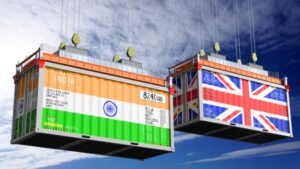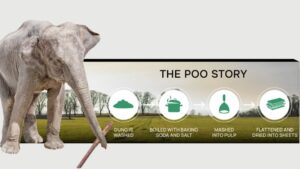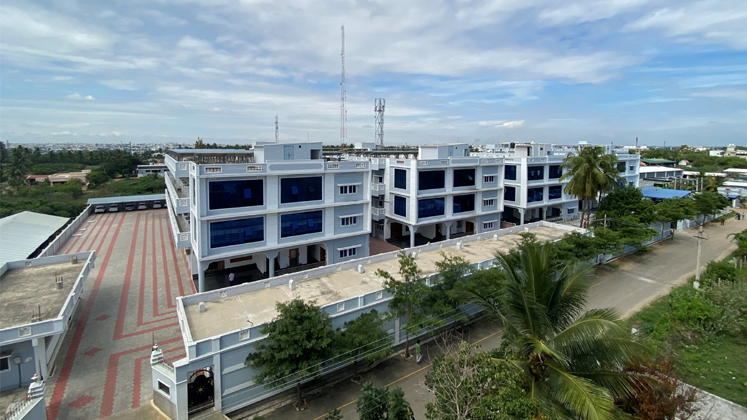
There are big garment manufacturing groups that are doing wonders in business and are often talked about by the Industry. And then there are groups that are less hyped but are silently working to carve a niche for themselves in the fashion business. One such garment manufacturing group is Tirupur (India)-based AKR Industries which has 13 factories located across three states of India and has an installed capacity of around 5,500 UBT machines, which is no small feat. Since its inception in 1995, the group has progressed remarkably well to hit US $ 150 million turnover in 2020 and has set a number of trends in sustainability, technology, product diversification, employee engagement, and, most importantly, in its business strategies that are a result of responsiveness to ever-evolving market needs.
Though the company has maintained a distance from media for years, Team Apparel Resources is thrilled to get into an exclusive interaction with Loganathan Kalimuthu, Managing Director, AKR Industries. The conversation digs into a lot of layers to discover various aspect of AKR’s business model, the current market situation and long-term projections.
AR: How have the market sentiments been for AKR Industries lately? Are US/EU buyers back to sourcing from India after going for nearshoring that caused a short-term halt on business for Indian exporters?
Loganathan: The market sentiments have been positive for quite some time now. Sourcing from US has gained momentum and the EU is also catching up fast and placing orders in India. However, the complete revival is not yet there as buyers are still skeptical about the impact of the possible third wave and will wait for a couple of months to see its effects before placing orders to pre-COVID levels.
AR: AKR Industries produces around 4 million garments a month. Do you see mass production as a problem at a time when brands are going for low MOQs in post-COVID era?
Loganathan: Usually, Indian market is focused on catering to low MOQ orders when compared to other countries like Bangladesh, Vietnam etc. Though we have built capacities to produce millions of garments per month, we are well trained to handle even low MOQs and hence we don’t feel the pinch. Our core strength lies in the fact we are a high fashion garment manufacturer and we have capacities for basic commodities as well, where many of our neighbouring countries are lacking.
AR: Product diversification is a key in today’s time.. AKR has some value-added knitted products in its basket.. Are you seeing a possibility of diversifying into woven segment as well?
Loganathan: Right now our prime focus is to build efficiency in our operations and maximise the capacity utilisation in the current value-added basket of knitted apparel. Once accomplished, by the target date which is the year end, we would expand our operations pan India including lucrative destinations such as Andhra Pradesh, Bangladesh and Vietnam. In woven, we are aiming to add denims in our vast product basket, while home textile is another go-to product category for us. We want to increase our manufacturing capacity by three fold by 2024.
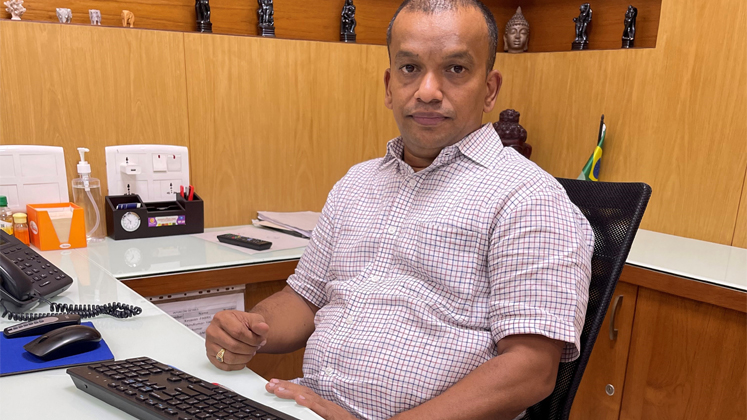
AR: What role do you see technology and automation playing in manufacturing landscape of labour-intensive country like India?
Loganathan: Although technology undoubtedly helps in simplifying processes, we feel, in the high-fashion garment industry, automation may not be a feasible option across departments since the cost of automation is comparatively more expensive than the labour cost. Also, the ever-changing fashion poses a high risk of return on investment particularly in automation in garmenting because of the differences in manufacturing of value-added garments and basic commodities.
AR: Particularly in cutting room, how much fabric you have been able to save using installed auto-cutters? What’s the daily cutting output on these cutters?
Loganathan: In cutting room, our auto cutters helped us to save 2-3 per cent of fabric. Average output is around 2,400 pieces a day per cutter in our kind of products where the fabric GSM is on the higher side and because of the restricted number of layers as per the brand quality requirements.AR: Process visibility on sewing floor has become crucial and loopholes may lead to longer lead times, more defect rate, more wastage and ultimately less profitability. How is AKR working in this direction so that process visibility can be improved? Are you using any tools to keep track of the processes and productivity in real time?
Loganathan: AKR is tracking the real time production in knitting and fabric production process through complete automated production monitoring systems, custom developed to meet in-house requirements. This gives complete visibility of the process right from yarn in-house to fabric delivery. We are developing similar system for garmenting which we expect to be fully operational by the end of this year.
AR: India has also been targeted for its low efficiency on shopfloor… Even some big factories do run on less than 40 per cent efficiency. Where does AKR’s garmenting division stand on efficiency front? What are your initiatives to improve workers’ efficiency?
Loganathan: As a value-added garment manufacturer, our efficiency on shopfloor is around 50 per cent. And, as you have rightly mentioned, it has been a topic of major concern in this industry where our margins are becoming thinner day by day.
We do agree that there is a scope for improvement but the higher percentage of workers attrition, and consequently, the ever-changing workforce nullifies our efforts that were invested on training and motivation on the set of workers.
We are under the impression that providing a comfortable accomodation for migrant workers with an ambience replicating their home town is the only way to prolong their employment with us, thereby we aim to improve workers’ efficiency.
AR: AKR recently invested in 3D software for virtual sampling… How has been the experience? How much time and cost your team has managed to save using 3D sampling?
Loganathan: We have deployed Browzwear 3D as a tool for virtual sampling and we have been using it since one-and-a-half years. This is relativey a new concept and not many buyers have started to use 3D yet. Even our customer is using it only partially and, so far, the need for physical sample has not been substituted by the 3D software and virtual mannequins.
The fit technicians are mainly from the old school of thought and they are considering the virtual samples submitted in 3D not as a replacement for submission of physical samples but have added it as an another level of requirement, which has defeated the whole purpose of investing in the technology. However we are hopeful that like every new technology, this will substitute the physical samples.
Until all buyers adopt to use the 3D technology in full without any reservation, at all levels, right from proto, sms and fit up to pre-production sample level, we cannot anticipate any cost saving because of 3D.
AR: Raw material costs are skyrocketing for last several months and that’s hurting apparel manufactueres. How are you managing to keep the overall cost of the products down amidst this rising RM cost?
Loganathan: We are managing the increased cost of RM in 3 ways – Absorbing the loss in our margin; Reducing the wastage and Reducing the carrying cost (JIT). Still, it (raw material cost) hurts us a lot, as even after taking all measures, it has dented our net earnings and customers are not ready to give up charge, which is adding to our cost burden.
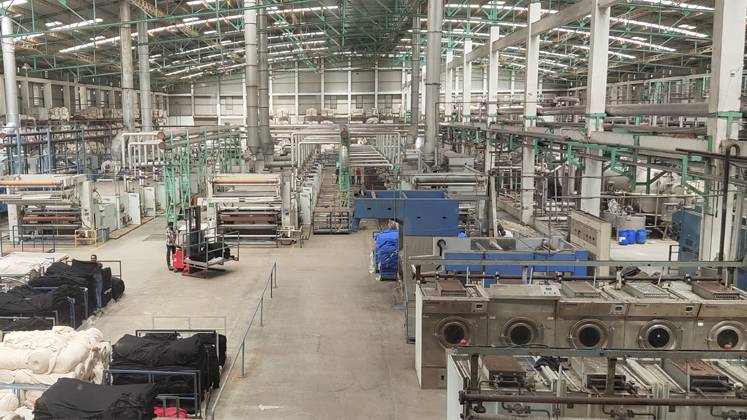
AR: How different are your products’ unit prices (or FOB prices) for basic commodities such as T-shirts, polo etc., as compared to low-cost destinations such as Bangladesh? Do see you India keeping its production cost lower than the neighbouring countries to attract more orders in future and place itself even more strongly in global market?
Loganathan: We are not competing with Bangladesh at all, with the kind of value added products we manufacture. We always wanted to compare with Turkey and we may be little competitive compared to Turkey.
Also, competitiveness depends on the market. If it is USA, we can be competitive but with Europe, we cannot be competitive because of the GSP benefit these neighbouring countries are enjoying. At the present juncture, we don’t see India can be competitive with our neighbouring countries.
It may be possible if the Indian Government promotes inland consumption of cotton yarn and then it may give an advantage to a significant level.
AR: AKR Industries holds great reputation in sustainability. It is hailed as the first company in the country to use zero effluent water discharge for dyeing processes. What does ‘sustainability’ mean to you? What other sustainable measures you have taken to contribute towards environment?
Loganathan: True. We have done significantly well to boost our sustainability goals. AKR follows 4-pronged sustainability strategies. They are – Manufacturing sustainable fashion products; ensuring environment protection in all its operations and processes; Reducing carbon footprint with right technologies and strategies and most importantly, contributing to environment development with proactive initiatives. We have been rewarded for our efforts by many buyers/retailers like H&M and PVH. AKR is proud to implement various sustainability measures as it gives the company satisfaction of contributing whatever is possible to save our environment for the generations to come.
Read more about AKR Industries’ Sustainability initiatives
AR: AKR Industries partnered with USA’s Good Clothing Company in 2018 to bring its 20% production in the USA. What inspired you to go ahead with this project? How is this collaboration running now?
Loganathan: The collaboration is going well as we started exporting since early 2020 and we have reached a value of over US $ 2.5 million. In the meantime, we have strengthened our teams by inducting best sourcing talents from the buying industry in India to handle the growing volume.

